In this issue:
CHARGING AHEAD
The EU start discussions on the future of charging electric vehicles and drivers’ hours law
Customer Spotlight
Connecting the dots with Griffins Logistics
By Adding ‘Value’ How the Aquarius App can help drivers feel valued


Issue 6Spring 2024

Get in touch with our team using the contact details provided below.
Customer Support: 0330 333 8788
Sales Team: 0330 333 8789
CONTENTS Issue 6 - Spring 2024
PAGES
Page 2
WELCOME
From Director Mark Johnston, welcoming everyone to this Spring issue of CONNECTED in our 20th anniversary year.
Page 3/4
NETO ZERO
In support of UK and EU targets for the decarbonisation of HGV and Coaches, Chris Cuffe highlights four specific projects that have been granted UK government funding of up to £200 Million.
Page 5/6
CUSTOMER TALK
A round-up of our customer’s news and recent successes.
Page 7/8
CUSTOMER SPOTLIGHT
Family-owned Griffins Logistics share how as a two-gen erational family they have modernised the company and digitised all areas of their fleet management processes relating to driver and vehicle activity.
Page 9/10 PRODUCT SPOTLIGHT
We discuss how the newly updated Aquarius App can help make your drivers feel VALUED.
Page 11/12 NEWS ROUND UP
The latest company news from our IT, support, and com pliance teams.




PAGE 13/14 TALKING COMPLIANCE
In March, Marc Caplin, Aquarius’s Compliance Manager joined an EU Enforcement Meeting in Brussels, where discussions for the first time focussed on how enforcement authorities plan to approach enforcement of a driver’s time spent recharging vehicle batteries. Marc shares what was discussed.
PAGE 15/16 COMPLIANCE – PUBLIC INQUIRIES
Laura Hadzik Partner, Co-Head Commercial Road Transport at JMW Solicitors talks about the various trigger points on the road to Public Inquiry and offers her expert advice.
PAGE 17/19 TACHO COMPLIANCE
A round up of the latest compliance-related news, and Marc Caplin, Aquarius’s Compliance Manager discusses why tachograph analysis is only one part of the puzzle.
PAGE 20 TAKE THE EARNED RECOGNITION TEST
Have you got what it takes to gain ER status and are you ready to take the test?
PAGE 1
All rights reserved. Copyright for all materials published in CONNECTED remains with the publisher - Aquarius IT Ltd

WELCOME
To the Spring issue of CONNECTED, and we are delighted to confirm that the first quarter of 2024 has already put a spring in our step. Everyone has been busy with meetings, onboarding, training, tender documents, and supporting customers with Earned Recognition audits - and we are delighted that we ended our financial year with the team exceeding its growth expectations.
It is also our 20th anniversary year, which provides a time to reflect on what we’ve achieved over the last two decades, and look forward to even more exciting developments ahead – starting with our newly-developed Aquarius App, which we will be demonstrating at this year’s trade shows, starting with the CV Show in April (and is our Product Focus in this issue, with the emphasis on valuing drivers).
Reflecting on the last 20 years, and being there from the very beginning of the digital tachograph era, we have grown and moulded our product portfolio alongside the needs of the industry, and I’d like to think we’ve provided a supportive helping hand to all our customers who made the transition from analogue (and those now going from digital products to alternative digital products). Providing help and support has been at the heart of everything we have done since 2004, and it will continue to be.
We pride ourselves, in not only having a dedicated in-house IT development team and a solutions-led compliance team that all customers can call upon at any time, but also the fact that we listen to our customers equally. This combination of listening (and supporting and responding), and keeping ahead of the IT and legislative curve to provide customers with real solutions has proudly led us to where we are today – and there is so much more we have planned.
Underpinning all this is our team who go above and beyond to provide exceptional levels of support; many of whom have worked together at Aquarius for a long time. As I’ve stated previously, the fact that our sales, technical, and compliance teams, have been with us since the beginning, does set us apart, as they have long-term, intimate knowledge of the software and the industry, and importantly, they understand what our customers need.

Back to this issue, and on the subject of evolvement and changes, we have a lot of compliance updates this quarter, starting with Marc Caplin, our Compliance Manager, who shares the latest update from Brussels on page 13 where for the first time the EU discussions turned to ‘the future of charging electric vehicles and drivers’ hours’. As we all know, probably the biggest factor any operator or driver has to consider when routing, scheduling, and transporting goods in HGVs (for hire and reward) is the restrictions imposed by the drivers’ hours law legislation.
The charging of electric HGVs certainly adds another level of complexity to this, but the introduction of potential changes to legislation, as being deliberated in the EU, can remove another potential barrier to the adoption of electric HGVs moving forward. If a driver is ‘allowed’ to interrupt his rest period once or twice specifically to plug or unplug a charger and move the vehicle off the charging bay, delays can be avoided, which can only be a good thing as we don’t want a vehicle parked on a charger bay longer than it needs to be.
As always, we hope you enjoy reading this sixth issue of CONNECTED, and thanks also to Griffins Logistics for sharing their story in our customer spotlight on page 7 – we think the story will resonate with family-run businesses across the UK with how younger generations are successfully embracing all the benefits of going digital. If like Griffins Logistics you’d like to be featured in a future issue please get in touch, or if you have ideas for technical or compliance-related stories.
Also, please join us on Thursday 18th April when we will be hosting a free webinar with JMW Solicitors to discuss the latest roadside record-keeping requirements.
Finally, on behalf of everyone at Aquarius, please may I say a big thank you for your continued support over the last 20 years.
Mark Johnston Director
PAGE 2
NET ZERO

THE DRIVE TO NET ZERO
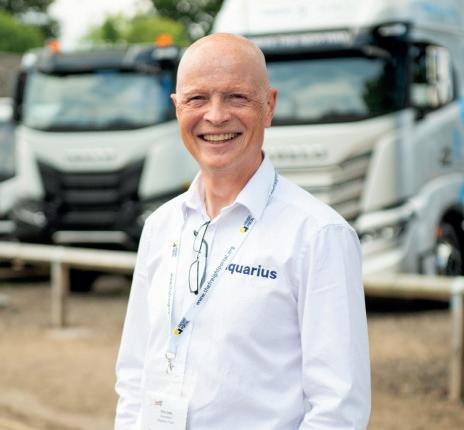
In Issue 5 of Connected (Winter 2024) Chris Cuffe talked about the UK and EU targets for decarbonisation in the HGV sector, and he highlighted four specific projects that have been granted UK government funding of up to £200 Million. Here Chris provides further updated information on these projects, which were announced in October 2023.
Project Electric Freightway
Gridserve will receive government funding of £62.7 million together with large scale public investment to lay the foundations for one of the most advanced HGV charging networks in the world. The project brings together a consortium of truck manufacturers namely; Volvo, Renault and DAF. A fleet of around 140 demonstrator vehicles across the consortium brands will be supported by the new charging network. The project will run until 2030 and aims to act as a catalyst for the greater uptake of eHGV.
eHGV will require a lot of space and a lot of power and Gridserve have ambitions of providing up to 1 megawatt charging. That level of power is akin to a small hamlet’s requirements. The ultimate aim of the project is to not only demonstrate that it is feasible to run an electric truck from one end of the country to the other but that it can be done at scale. The project will look to optimise the use of required stops such as those necessary to comply with drivers-hours’ law. Gridserve will develop, deliver and operate the eHGV charging hubs at motorway service areas as well as at commercial depots.
You can see a vision of their future at the Braintree Electric Forecourt® which was not built for eHGV as such, but does boast one 360kW high power charger in a bay that can accommodate a fully articulated HGV, under its solar canopy.
eFreight 2030
The eFreight 2030 project will receive £49.2 million in government funding, boosted by an expected further £500 million of private investment. The project’s aim is to demonstrate how the use of eHGV can be scaled up in the UK using British Technology.
The project will utilise the latest in electric trucks from Renault, DAF and Scania, together with up to 1 megawatt charging from Voltempo with the hope that up to 32 installations will be rolled out.
Voltempo introduce a charging model called HyperCharging™, which is proposing to deliver up to 1 mW of power which can be aggregated from a mixture of the national grid, solar, wind, bio fuels or battery storage. Rather than individual chargers, HyperCharging™ is based on a central charger concept with the entire unit built centrally and delivered to site.
100 eHGVs will be in operation across a range of different uses to help prove the operational benefits of eHGV alongside publicly accessible charging hubs. Whilst the majority of vehicles will be run by consortium members, up to 10 vehicles will be available for other fleets to try on a short-term basis.
PAGE 3

Hydrogen aggregated UK Logistics (HyHaul) project
The HyHaul project will receive £31.8 million of government investment. The project led by Protium (the UKs largest green hydrogen producer) will incorporate green hydrogen production, refuelling infrastructure and the deployment of 30 Hydrogen Fuel Cell HGV for use along the M4 corridor. The consortium includes players such as; CNG Fuels, Scania, NRG Riverside and Reynolds Logistics with trucks being supplied by multiple manufacturers. There will be four public fuelling stations distributed between London and Wales, with the delivery of the first 30 vehicles targeted for 2026.
The project will provide vital information on the performance of fuel cell electric trucks, and will hopefully stimulate demand for green hydrogen led solutions.
”
” Gridserve have ambitions of providing up to 1 megawatt charging … That level of power is akin to a small hamlet’s requirements
Zero Emission Northern (ZEN) Freight
ZENFreight will receive up to £54.6 million in government funding and is a consortium of leading truck manufacturers, Imperial College London, BP Oil and a wide range of vehicle operators.
The project will establish seven sites combining Hydrogen refuelling and electric charging technologies. In use during the project, will be up to 70 eHGVs and up to 30 Hydrogen fuelled HGVs. The knowledge gained from this project should help to commercialise zero-emission technologies in the HGV sector.
We look forward to keeping you informed in relation to the drive to net zero projects in future editions of CONNECTED, and we welcome your comments on areas that you would like to see covered in this regard.
Aquarius has known and worked with Chris for more than 16 years; since his early days at Tachosys when he was the Sales and Marketing Director. Today, using his vast experience of tachographs and software, he works as a freelance consultant alongside the management team at Aquarius.
PAGE 4
WELCH JOIN eFREIGHT 2030
Congratulations to Welch Group who are celebrating their own 90th anniversary this year, and have recently joined the eFREIGHT 2030 consortium, which has been selected to join the UK government’s Zero Emission HGV and Infrastructure Demonstration (ZEHID) programme.

JM CLARK SWEEP UP & MAKE HISTORY
JM Clark made history in March when a five-mile stretch between junctions 10 and 11 of the M25 was shut to make way for the demolition and clean-up of a bridge – this was the first planned daytime closure of the motorway since it opened in 1986. The JM Clark team were involved in the clean-up to sweep up any dirt or debris, and make sure the road was safe – and teamwork was the name of the day with JM Clark working with the road / construction crews to help get the motorway back open 8 hours before schedule. Well done everyone.

FIRST RDF DELIVERY IN SLOUGH
In February, it was nice to read that Waste-a-Way Recycling Limited delivered the first truck load of RDF (refuse derived fuel) into the new Slough Heat and Power energy facility. They said: “We’re already enjoying the benefits of the 24-hour operation and look forward to a long relationship with the facility operators.”

JOIN US ON SOCIAL MEDIA
Like / Follow us on Facebook, LInkedIn & X



CUSTOMER TALK PAGE 5

NEW INVESTMENT IN TRUCK STOPS
Not customer specific news, but welcome news for customers is that the government has announced its investing £16million to upgrade 38 truck stops in England with new showers and restaurants, more secure fencing around rest areas and new parking spaces for HGVs.

PAGE 6
CUSTOMER SPOTLIGHT
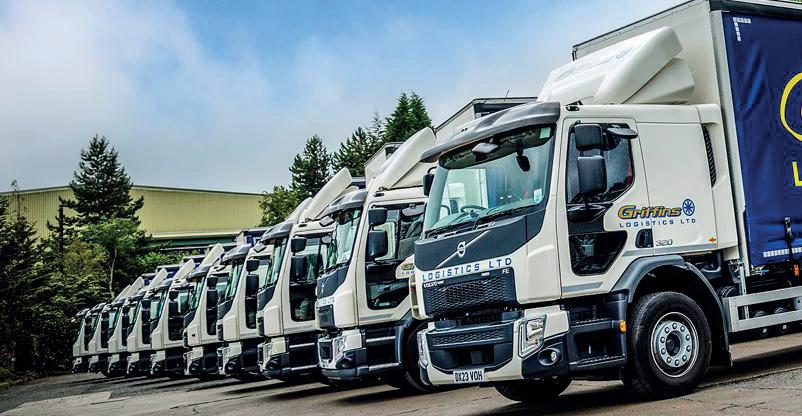
CONNECTING THE DOTS
Griffins Logistics, one of the leading freight distribution companies in the East Midlands, are a true family business with three generations all actively involved – from Dick and Cathy Griffin who started the business 30 years ago, to siblings Owen and Charlotte who today steer the main operations alongside their parents, and the grandchildren who like to get involved during the school holidays.
Alex Young, Aquarius’s Commercial Account Executive recently caught up with Owen Griffin, the company’s Commercial Director who has been involved in the business since leaving school, and who along with his father has been the main driving force behind modernising the company, which in recent times has included working with Aquarius to digitise all areas of their fleet management processes relating to driver and vehicle activity.
Before we get started, can you tell us a little more about Griffins Logistics and your services?
We are a freight distribution company based in Nottinghamshire, and our expertise is UK pallet collection, delivery and distribution, for both single and multiple pallet consignments. We operate 24 hours a day, Monday to Saturday collecting shipments from Nottingham, Sheffield, Doncaster, Lincoln and the surrounding areas; delivering to locations throughout the UK and Ireland as well as worldwide. We are also a member of the Palletforce network and work in conjunction with a group of distribution partners that are strategically placed around the country.
What type of infrastructure supports this 24-hour operation?
We have a fleet of 40 vehicles (34 with tachos) that operate from our 25,000 sq. ft drive through freight handling facility in Tuxford. We employ 35 full-time drivers and family when needed plus we operate our own workshop on site.
On to your role as Commercial Director … over the last 7-8 years since becoming a director, the company has done a complete 360° by digitising all of its compliance and fleet maintenance processes – is this a coincidence?
No! When Charlotte and I were appointed company directors in 2017 we wanted to modernise the whole business; and for me on the compliance and fleet operations side, my aim was for the company to go paperless, and that started by working with my dad to introduce ClockWatcher Elite, and we have gone up and up from there – and as we stand today everything related to managing our drivers, vehicles, and assets is integrated through Aquarius.
Did you get much resistance for wanting to do digital?
Ithink it’s fair to say that people don’t like change and some may be reluctant to embrace new technologies, especially in traditional family-run businesses where staff have been there for years. My parents, as the MD and Finance Director, were very supportive of mine and Charlotte’s ambitions, as they could see the benefits it would bring to the business. Seven years on and together we have completely transformed the whole organisation – I think we have just one more of dad’s filing cabinet to dispose of!
PAGE 7
”
”
Asset Maintenance’s integration with the Defect App simply connects all the dots

Let’s get into some of the detail … the company has been using ClockWatcher Elite since 2018, and more recently you’ve gone a step further by starting to move your fleet over to remote downloading – how is that going?
ClockWatcher is the first thing I open when I come into the office in a morning, and from one screen I can immediately see all the actions that are needed; and now with the addition of remote downloading I have instant access to all the driver and vehicle tacho data. We’ve also recently added eSIGN for processing infringements electronically, which has also been a game changer.
Going full on digital, has truly revolutionised how we collect, analyse and report on tacho data; it is more efficient, less of an administration burden, this has saved us huge amounts of money in terms of time and printing costs.
In the meantime, you’ve also recently taken on Asset Maintenance, Asset Finance, Defect App, and Document Management – the full integrated solution, can you explain?
The progressive next step after ClockWatcher Elite, was for us to have an integrated digital system that would support and ‘connect’ all the different areas of our transport operation. We wanted everything on one platform from one company – and we knew when the time was right, Aquarius would be our first point of call because they have always provided excellent support and service.
What has been the response from your workshop to the new digital systems?
Our technicians in the workshop who were used to a paper-based system for managing PMIs and MOTs were a little nervous at first about Asset Maintenance, but with training
and support from Aquarius they are now fully on board and love how simple the software is to use. The implementation has made their job so much easier, especially the cross integration with the Defect App, as now the information from the Driver’s App goes direct to them every morning, cutting out the traffic office administration. It simply connects all the dots and everything runs smoothly and efficiently.
And the drivers?
For the drivers we couldn’t have timed it better, as it coincided with Aquarius rolling out their new Aquarius App, which is very user-friendly. This made it a lot easier to get the drivers onboard. With the App too, drivers have live access to Document Management, which we use for sending memos to drivers, and LST rules and route maps – again both the traffic office and the drivers agree this has significantly improved communications and their roles.
For you as a company, what are the main benefits?
Aside from all the obvious operational and administrative benefits, the company runs more efficiently which benefits all of our employees and our customers. The time and cost savings too are significant; Asset Maintenance for example has saved my dad a full day’s work record keeping.
Operationally, another stand-out example, is the Fleet Availability page in Asset Maintenace, which provides the transport planners with live workshop information on a vehicle’s availability. For a company like ours that operates 24 hours a day, having this system alone has been worth it.
So, what’s next?
It’s still early days at the moment for Asset Maintenance and especially Asset Finance, so that is our current focus, but so far, everything is running like clockwork, thanks to Aquarius’s ongoing support.
PAGE 8
ADDING ‘VALUE’ TO YOUR DRIVERS
By Mark Johnston, Director at Aquarius
With driver shortages still prevalent, retention strategies are more important than ever, and one-way in which operators are making a difference, is by investing in time-saving technologies that make drivers and operators work life a lot simpler and safer – in turn, this approach is also helping to drive wider business efficiencies.
Interestingly in the February 2024 ‘View from the Cab report’ when drivers were asked about job satisfaction; what they generally rated lowest was management and work coordination (e.g., efficiency, hours worked and training provided) and one of the areas drivers identified for improvement is reducing the amount of paperwork.







V A L
isibility, with finger-tip access to official company documentation and personal information.
ssurance that safe, protected working practices are in place

U E D
ogic, with smart, efficient compliance and HR processes
nified and co-ordinated approach to make day-to-day tasks easier.
ngagement and support with two-way communications in real-time
evelopment, through training, encouragement and guidance.
The Aquarius App ticks all these VALUED boxes and more – because it’s MORE than just a Driver Defect App!
In line with this, we’ve recently updated our Aquarius App to make it even easier for drivers of all IT abilities to communicate, interact, and record data while out on the road.
So how can the Aquarius App help make your drivers feel VALUED?
Built with the driver in mind, the Aquarius App makes it easy for drivers to communicate, interact, and record data, and it ensures that drivers have fingertip access to essential company information, in real-time, on a day-to-day basis from their mobile or tablet.
The 2024 App is more than a Driver Defect App and has been developed using our combined two decades of expertise, to support (as stand-alone services or as a full solutions package):
• Daily Driver Defect Reporting
• Incident Reporting
• Time & Attendance (linked to payroll)
• Document Management
• eSIGN (Infringement reporting and more
It also fully integrates with the Aquarius Tachograph Analysis and Asset Maintenance software systems.
PAGE 9
PRODUCT SPOTLIGHT

As part of our commitment to delivering ‘real’ integrated business solutions, the Aquarius App plays a central role in supporting the day-to-day reporting of driver and vehicle data within our software. It also provides an important service, in facilitating two-way communications between a company and its drivers.
The App, which primarily started out many years ago as a driver walk around check, now facilitates many of our core compliance and safety services, so it is important that we continually review its functionality in line with our own technological developments.
Alongside this, it was equally as important for our in-house IT
team to think about how all the everyday processes are used by drivers.
To illustrate this, we were talking to one operator recently, who said that some of his drivers were hesitant about going from paper to digital on some of the functions, but the Aquarius App, because it is so visually simple to navigate made the transition to digital so much easier, and the drivers soon realised all the benefits.
Further, we know from speaking to customers too, that by investing in technology that improves the everyday processes that really matter to drivers, i.e. enhanced communications, and more streamlined compliance and HR practices, does help them feel more valued as employees.

PAGE 10
CELEBRATING OUR APPRENTICES
For National Apprenticeship Week in February, we shared our story of how over the last five years, we have successfully taken on three Junior Developers and one Junior Support Technician through the apprenticeship programme - Connor Haslam, Adam Jones, James Smith and Josh Farley.
Dave Bailey, who co-founded Aquarius said: “The benefits for us as an IT business is that the apprenticeship programme has enabled us to induct all four of them into quite technically challenging roles, and it has given us the opportunity to train them
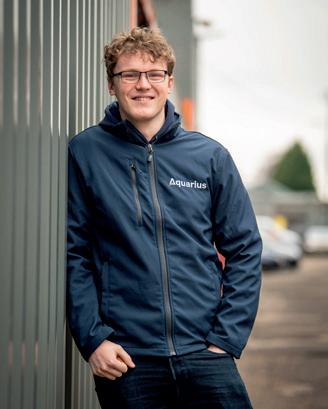


CV SHOW – THE COUNTDOWN HAS STARTED
in line with the needs of our business.
For the apprentices too, alongside their academic courses, they have gained a valuable skillsbased learning experience in a real working environment, and at the end come out with an industry-recognised qualification – and in the case of our four apprenticeships the offer of full-time employment.
It’s a win-win, and each of them are invaluable members of our IT team, and making their way to have a more senior role within the business.”
The countdown to this year’s Commercial Vehicle (CV) Show has started. The three-day show which starts on the 23rd April is one of the highlights of the year for the Aquarius team, and speaking at the show’s pre-media event, Liz Haselden, Aquarius’s Marketing Manager, who has been going to the show for more than two decades, said:
“This year we are proudly celebrating Aquarius’s 20th anniversary and in one way or another, our products have been on display at the CV Show for almost all of those years. In fact, the first time was in April 2005 and it was the CV Show that provided the platform for us to launch our very first WTD software - and from there everything took off!
In the years since, we’ve grown alongside the industry; we’ve moulded our products and significantly expanded the range of solutions we offer to meet the requirements of the end user, the driver, the operator, the owner, the transport manager, the HR team, the IT department etc.
It is an exciting time, and we can’t wait to get out in front of customers and visitors once again at this year’s show, and demonstrate all the latest developments in our software, as well as the newly updated Aquarius App. We are also looking forward to seeing all the new elements that have been added to this year’s CV Show.”
Join us on Stand 5B72.

NEWS ROUND UP PAGE 11
REGISTER HERE
Adam Jones
Connor Haslam
James Smith

CHAMPIONING SERVICE AT THIS YEAR’S MT AWARDS
For the 6th year in a row, we are proud to be sponsoring The Motor Transport Service to Industry Award. This award is presented to an outstanding person who has made a significant contribution to the road transport industry during a long and distinguished career in road freight transport – previous winners have included William Stobart, Donald Burton of Don-Bur fame, Thomas van Mourik of Culina Group, Carole Walker, former CEO of Hermes Europe, and last year we had the honour of presenting the award to Steven Granite from Think Logistics and the Abbey Logistics Group.
NEXT STOP - ROAD TRANSPORT EXPO
With organisers having now cancelled the Sustainable Road Transport Show (formerly ITT Hub), our next big show after the CV Show will be Road Transport Expo on the 4-6th June - register for free and stop by to see the Aquarius team on Stand G40.

There are a large number of operators still unaware or confused by the amendments to the roadside record-keeping requirements in August 2020 (EU Mobility Package), and which are now being enforced!
Marc Caplin, our Compliance Manager alongside Laura Hadzik, Partner and Co-Head of Commercial Road Transport at JMW Solicitors will discuss these requirements and answer any of your questions.
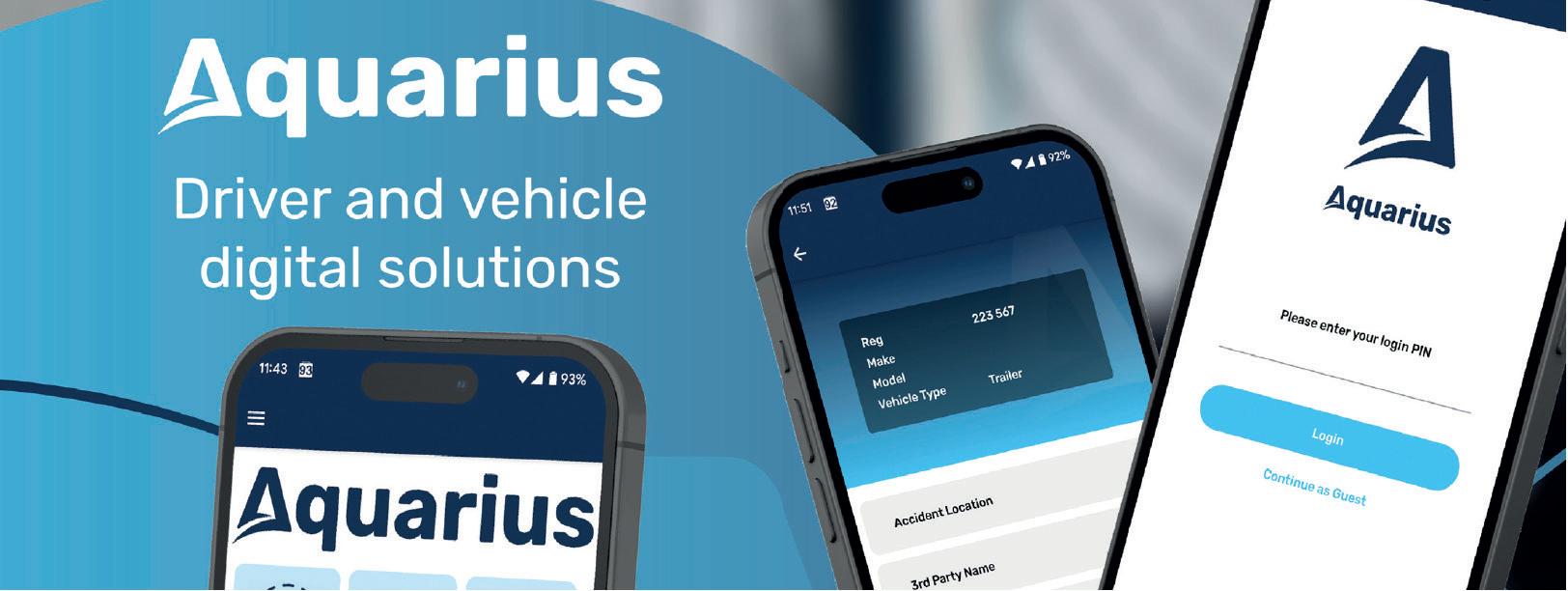
PAGE 12
SIGN
JOIN OUR RECORD KEEPING WEBINAR
UP HERE
TALKING COMPLIANCE

THE FUTURE OF CHARGING ELECTRIC VEHICLES AND DRIVERS’ HOURS
By Marc Caplin, Compliance Manager at Aquarius
In March 2024, Aquarius joined an EU Enforcement Meeting in Brussels where upcoming developments in legislation and enforcement technology were discussed. On the agenda was the electrification of HGV vehicles and how enforcement authorities plan to approach enforcement of time spent recharging vehicle batteries.
Whilst we are still in the early days of planning for the prospect of transport companies operating fully electric HGV vehicles, the technology does exist at a prototype stage, and during the meeting a case study was presented of an electric HGV travelling from Denmark to Germany and back.
The purpose of the discussion was to examine how the inevitable charging of vehicle batteries should be recorded under Drivers’ Hours. In the future, these vehicles will operate under current Drivers’ Hours (Regulation EC No 561/2006); but of course, as it stands, the regulation made back in 2006 does not account for the ensuing advances in technology.
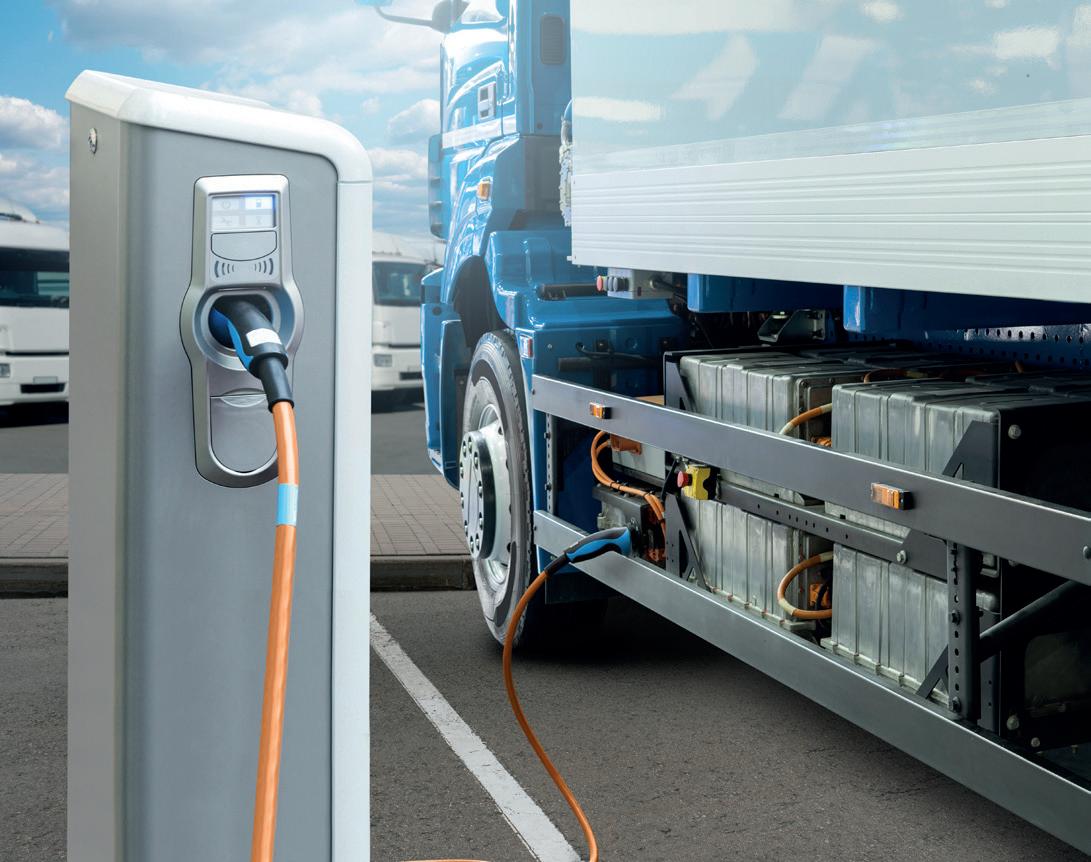
The main point of discussion is whether the driver would be able to take a qualifying break or daily rest while the battery is charging.
The subject was approached based on the assumption that for a driver to be able to take a period of break or rest wherein they can freely dispose of their time, the technology should allow for any battery charging to be totally unsupervised. If not, any supervision or use of equipment on the part of the driver would need to be recorded as other work.
The current consensus seems to be that the driver would record the plugging in/ un-plugging of the vehicle as “other work”, assuming that the vehicle can sit undisturbed for the
duration of the break or rest. Any movement of the vehicle, or any interaction with charging equipment by the driver would be deemed an interruption to that break/ rest.
Charging Methods
There will be two main methods of charging; using slow chargers based on existing technology but also using so called mega-watt chargers that will have up to 1000kw capacity.
The intention is that vehicles could be put on “fast” charge using a mega-watt charger during a driver’s 45-minute break, enabling the vehicle to be driven for at least 4.5 hours on a single charge, whilst slow chargers could be used during a driver’s Daily Rest. Again, overnight charging is based on the assumption that the vehicle could remain at the same charging station for the duration of an entire 11-hour daily rest.
The question was raised as to what might happen if the vehicle had to be moved on before the end of the 11-hour period, and it was suggested that recording a Daily Rest under something akin to ferry/train conditions could be employed, allowing that rest period to be interrupted which then raised additional questions around driver welfare.
In the field of heavy vehicles, this technology is still at an early stage and some important questions remain, over and above how to record charging time.
” ”
The purpose of the discussion was to examine how the inevitable charging of vehicle batteries should be recorded under Drivers’ Hours
PAGE 13
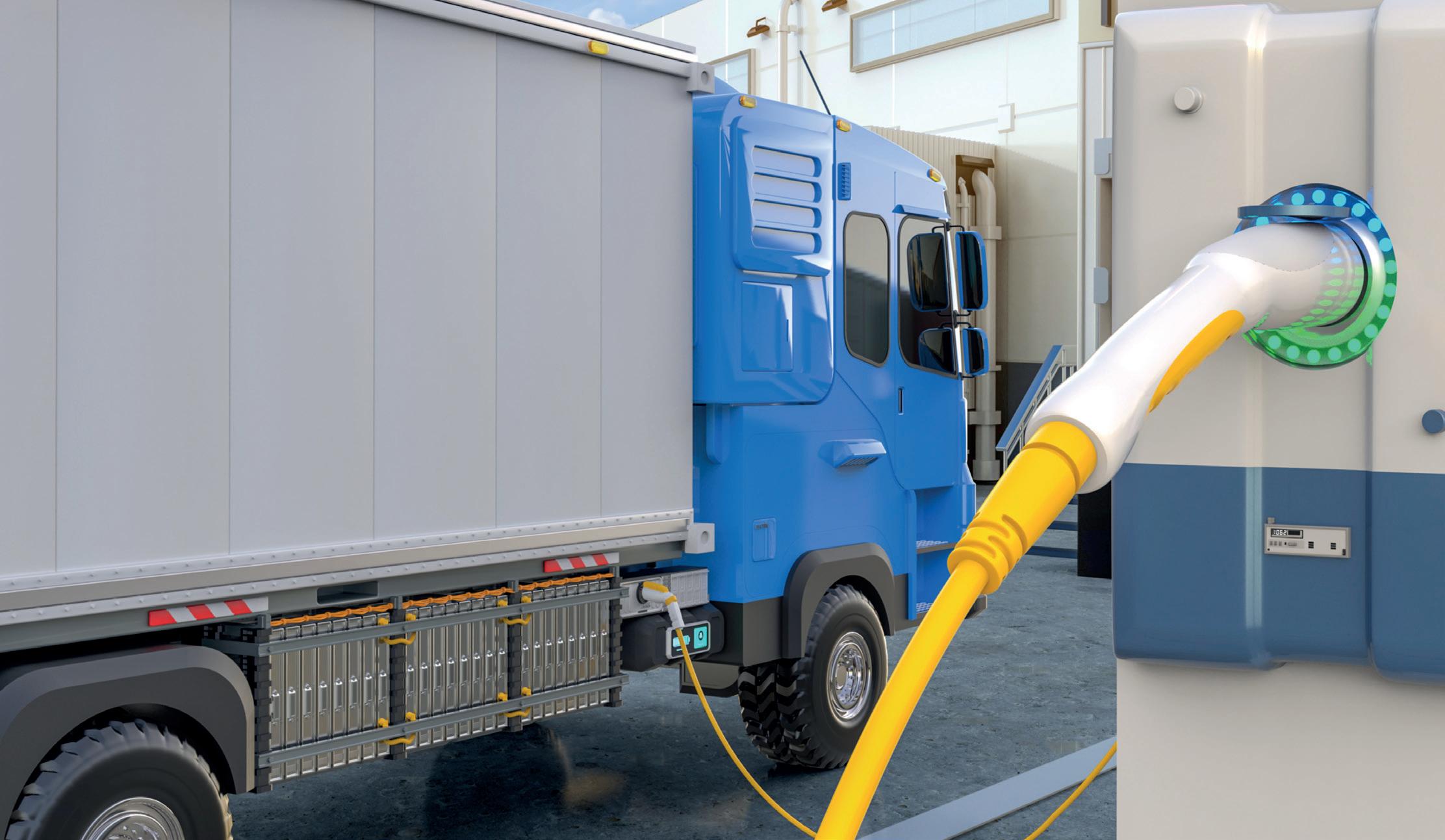
Enforcement
From an enforcement perspective, what could an officer check at the roadside to prove that a vehicle had been on charge, especially if a driver has taken a Daily Rest that includes interruptions? It was suggested that the driver could produce some sort of receipt as evidence. As a future solution that could make use of tachograph technology, Aquarius’ Guy Reynolds raised the suggestion of building something into the device’s Events log to record the start and end of charging.
Others raised the concern that the driver could be forced to plan their breaks around the needs of the vehicle and available charging points, which would again lead to concerns around driver welfare.
Looking to the future, it is hard to estimate how many overnight charging points would be needed to cater for the number of vehicles needing to recharge over a Daily Rest period but, based on the roll-out of EV charging points within the car sector, the challenges are clear.
It is proposed that drivers and operators would be able to pre-book their overnight slots before arriving, so it will be interesting to see how this might work in practice. Current concerns surrounding a lack of available parking facilities aside, there would be a loss of flexibility when it comes to choosing where to park, as it would need to be within a service area that contained charging facilities.
More details surrounding this new technology and the methods by which they could be enforced will emerge over the coming months and years, but it was heartening to see that the EU is taking a proactive approach in addressing these issues ahead of time.
FREE WEBINAR WITH JMW SOLICITORS ON RECORD KEEPING

We are aware that there are a large number of operators who are still unaware or confused by the amendments that were made to the roadside recordkeeping requirements in August 2020, and which are now being enforced.
In response, Marc Caplin, our Compliance Manager will be hosting a free webinar with Laura Hadzik, Partner and Co-Head of Commercial Road Transport at JMW Solicitors on Thursday 18th April at 1pm to discuss the requirements and answer any questions.
PAGE 14
SIGN UP HERE
COMPLIANCE – PUBLIC INQUIRIES

PROTECT YOUR OPERATOR’S LICENCE - DON’T LEAVE IT TOO LATE!
By Laura Hadzik Partner, Co-Head Commercial Road Transport at JMW Solicitors
Every operator and transport manager dreads receiving that letter calling them to a Traffic Commissioner Public Inquiry...with perhaps with good reason given in the most recent reporting year, there were almost 1,000 Public Inquiries relating to non-compliance by existing licence holders, with only 7% of goods vehicle operators and 4% of passenger vehicle operators coming out of the process with no action taken.

When presented with statistics like these, the obvious question is what can you do to avoid going to Public Inquiry in the first place or, if you do find yourself there, ensure you are in the strongest possible position to avoid, or minimise the severity of any, action.
The key is to act early!
We all know that, from time to time, things can, do and will go wrong – even in the most compliant and well-managed of operations. It is when, and how effectively, you respond to issues that ultimately determines the outcome.
It is very rare for a Public Inquiry to come with no prior warning – there will typically always be a ‘trigger’ event that should put you on notice of a specific issue and of potential further intervention – from either DVSA and/or the Traffic Commissioner. So, it is all about recognising those early warning signs (the triggers!) and dealing with them appropriately.
I regularly talk about the various trigger points on the road to Public Inquiry and the different categories of operator/ transport manager (determined by how early action is taken) ranging from the incredibly pro-active (who will have regular refresher training at all levels of the business and independent auditing of their compliance systems before they ever experience a trigger event) to those who only act when it is far too little far too late (who typically bury their head in the sand and turn up to the Public Inquiry with nothing but promises of future action).You can perhaps guess who fares best before the Traffic Commissioner?
The first – and most important - trigger might be some significant event, such as a wheel loss or a bridge strike, but far more commonly it is something far more subtle and less obvious – such as a DVSA roadside encounter of a driver. Either way, it is an event that puts you on notice of an issue and provides you with an opportunity to both address the particular issue and review your entire compliance regime - if you have a weakness in one area of compliance, it is possible you might also have a blind spot elsewhere; taking steps to address any shortcomings at this early stage puts you in a much stronger position when the DVSA turn up to investigate…and they will.
” ”
PAGE 15
The most common scenario triggering Public Inquiry is an ‘S’ marked prohibition notice issued at the roadside for defects relating to tyre condition (such as damage, low tread, cords exposed). This indicates the DVSA consider the defect to be the result of ‘significant failings in the company’s compliance regime’ (i.e. the company’s maintenance systems and procedures – here drivers’ daily defect reporting and/ or preventative maintenance inspections and/or tyre management – could and should have identified the problem that led to the defect).
A roadside encounter such as this will not only adversely affect your OCRS (and may also result in fixed penalty notices being issued to the driver – which need to be notified to the Traffic Commissioner), but will always lead to a followup investigation (typically an unannounced maintenance investigation, or a desk-based assessment) by the DVSA (this is trigger 2) with the most likely next step a call to Public Inquiry (this is trigger 3).
When faced with an ‘S’ marked prohibition scenario, I would therefore urge you to use the opportunity to: (i) thoroughly investigate the prohibition to identify the root cause (this might involve disciplinary action against a driver or technician, but should also involve a review of the relevant systems to identify any gaps and take steps to plug them); and (ii) audit all your compliance systems to identify and address any other ‘blind spots’.
DRIVERS’ HOURS CHANGES FOR COACH DRIVERS OPERATING IN EU
Officials have agreed to changes to the EU’s Mobility Package 1 on driving time and rest rules for coach tourism drivers. This has been welcomed by the industry as it will offer drivers more choices on taking their rest times, and operators more operational flexibility when they’re planning coach trips in the EU.
They also better reflect the operational differences between freight and coaches.
The new changes, yet to be ratified, will allow coach drivers to:
. Split their 45-minute breaks.
. Postpone their daily rest period by one hour once per trip, provided that the total accumulated driving time for that day has not exceeded seven hours.
. Drive longer national tours of up to 12 days, previously only possible during international trips.
The Upper Tribunal repeatedly re-confirm that “the attitude of an operator when something goes wrong can be very instructive” and, regardless of the ‘trigger’ event, the most effective approach to safeguard your Operator’s Licence and your business is to take specialist legal advice at the earliest opportunity, as experience repeatedly tells us the sooner you take steps to address any issues, the better the outcome for you and your business.
Aquarius have partnered with JMW Solicitors to provide you with access to specialist legal advice from experts who have enviable reputations for their unrivalled expertise and sector-specific knowledge. Contact Aquarius Legal Services powered by JMW on aquariusit@jmw.co.uk or 0161 838 2777 for a free legal consultation without obligation.

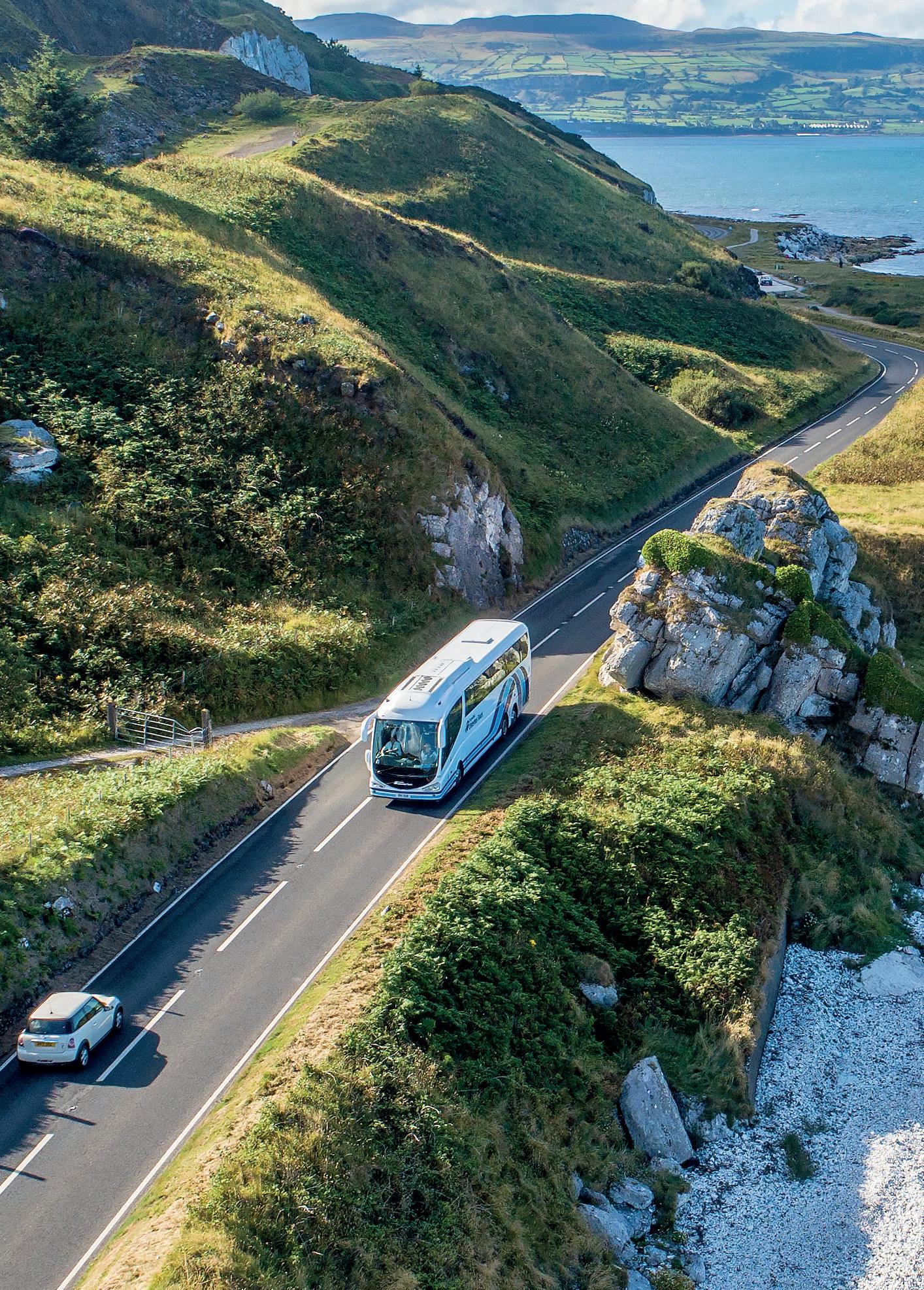
PAGE 16
TACHO COMPLIANCE
TACHOGRAPH ANALYSIS – ONLY PART OF THE PUZZLE!
By Marc Caplin, Compliance Manager at Aquarius
In the Summer 2023 issue of CONNECTED, we examined the drawbacks to using an “entry level” system compared with a more comprehensive analysis package (“Is your tachograph analysis software fit for purpose?”). In that article, we touched upon the fact that any analysis system, no matter how detailed, should only be used as part of the implementation of an operator’s internal policies and procedures; and as we mentioned then, it is remarkable how many transport operators admit to not having written policies when it comes to managing tachograph data. Therefore, we thought it would be worth expanding on this subject a bit further, and discuss how analysis only forms part of the puzzle!
Prior to the introduction of digital tachographs back in 2006, there were usually two approaches when it came to analysing their paper charts. People would either try to perform the analysis function on these charts themselves, or they would outsource this function to a specialist third party analysis bureau. In this circumstance charts would normally be shuttled back and forth by mail between the operator and analysis bureau, or eventually, the option of scanning and transmitting the charts became an option.
When using an analysis bureau, the end result would usually take the shape of a batch of reports that would be sent to the user by post or email on a pre-determined frequency. These reports usually formed the backbone of a company’s tachograph compliance system but, inevitably, the approach was always rather reactive with reports often being provided to an operator several weeks later. This made the job of infringement debriefing difficult, as the driver would end up being interviewed about something that could have happened up to two months prior.
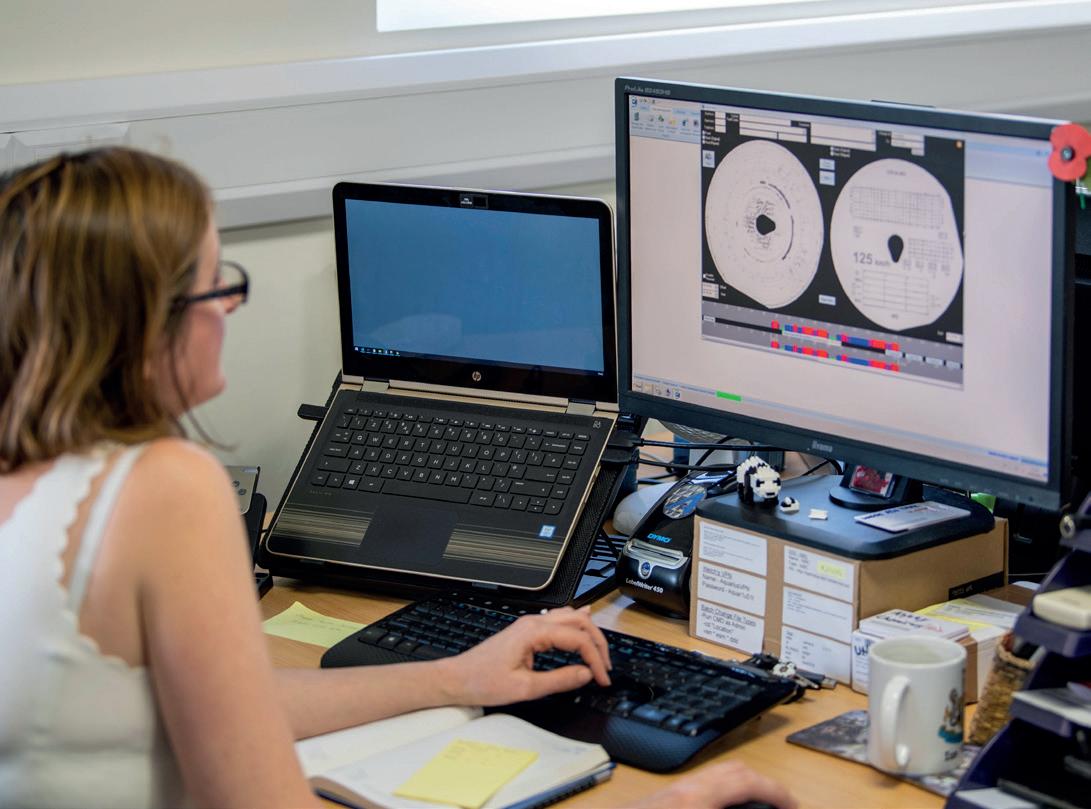
As digital tachographs slowly took over, bringing with them software-based analysis tools that operators could control themselves; many operators still adhered to the old model of working, opting to rely on scheduled reports to form the basis of their compliance system, often despite having a fully digital fleet.

There is a reason Traffic Commissioners advise that driver cards should be downloaded at least weekly and vehicles at least monthly, as it means that Transport Managers can have access to data far more frequently than they used to when drivers had to hold onto their paper charts for at least 28 days. Some companies have been rather slow to recognise this, sticking doggedly to monthly card downloads and 90-day vehicle downloads! In contrast, many fleets have deployed remote downloading technology, allowing for daily access to driver card data which means they are able to react to any emerging issues much more quickly.
Despite this, some Transport Managers still insist on clinging to their scheduled reports, without logging into their actual analysis systems and making use of more recent data.
As data can be added to the analysis system more regularly these days, the frequency at which these reports can be provided may have improved along with the lag between infringement and debrief, but merely interviewing a driver over their tachograph infringements and filing away the signed report is not enough!
Many operators are lulled into a false sense of security thinking that they are fully compliant because they have employed a tachograph analysis system but use of these tools, as comprehensive as they are, should only be used at the start of a process.
Should the DVSA attend a transport company to carry out an audit or inspection, they will have with them a checklist designed to identify whether the operator has written policies and procedures in place that cover areas such as tachograph analysis and driver debriefing.
Page 17
Policies are more than just a paper exercise; they are there to protect both the driver and operator. They set clear expectations and boundaries for employees and, so long as they are followed consistently, also provide employers with an effective framework of action points should something untoward happen.
When an inspection is carried out, not only will enforcement authorities take note of the effectiveness of the particular analysis system in place, but they will also want to see how it is used as part of an effective system for managing infringements. For instance:
• If a driver is triggering the same type of infringement repeatedly over time,do you have a policy to address this?
• What happens when this pattern of behaviour continues, despite these infringements previously being explained to the driver and further training having taken place?
• Would you be able to evidence a clear disciplinary procedure?
The Aquarius ClockWatcher Elite system contains many useful resources that can assist an operator in managing their fleet’s infringements across time. For example the software’s detailed Infringement League Table allows the user to look at infringement data across a date range and
interrogate which types of infringement keep recurring - both for an individual driver, but also across the fleet which can provide an insight into potential training needs. Infringement breakdowns for individual drivers can also be accessed via the Driver Hub which can be useful if a driver has come in to the office for a one-to-one.
”Policies are more than just a paper exercise; they are there to protect both the driver and operator
Once relevant policies have been established, it is vital that these are clearly communicated with employees so that that they know what their obligations are. A driver should also be clearly informed of any penalties and disciplinary procedures at the start of their employment. The outlining of these policies should be made part of a driver’s induction process, and any ongoing amendments should also be made clear. Ideally, policy documents should be individually signed by each employee, either on paper, or via a digital system such as the Aquarius Document Manager, which is available on the Aquarius App.
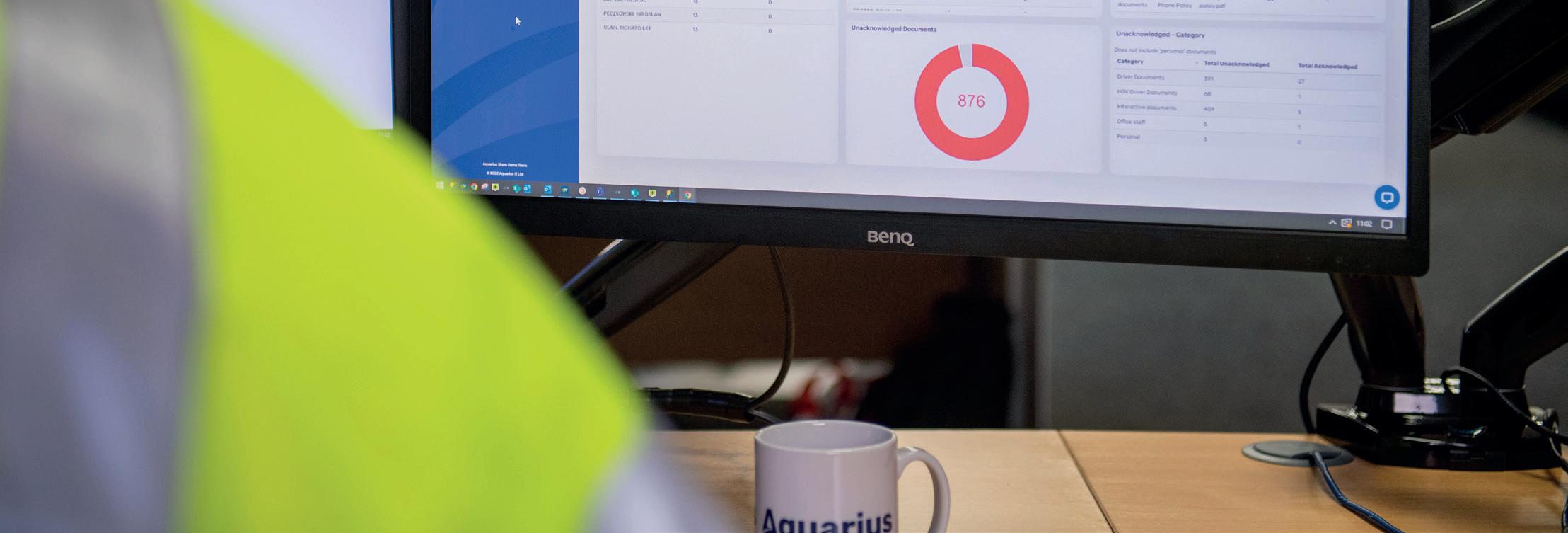
An operator should be able to evidence a clear understanding of what is required of them and what information they need to produce. If you are unsure of what the requirements are, then do some research (or ask us!) – it is much better to admit that you don’t know something than get caught out! In our experience, a classic example of this is the subject of tachograph over-speed events. Despite it often being one of the first things DVSA will ask to see evidence of, they are still a mystery to many people that we speak to!
Operators should also pay as much attention to their vehicle data as they do to driver infringements. Clear processes should be in place for identifying and investigating unexplained mileage, unaccounted vehicle movements and the aforementioned vehicle over-speeds.
Software systems like ClockWatcher Elite now offer the facility to digitally enter explanations against instances of missing mileage and upload any supporting documentation, allowing the user to create an evidence base that can be presented during an audit.
If anyone needs any further information, or any advice regarding what data they are expected to produce, please feel free to contact us on 0330 333 8789.
PAGE 18
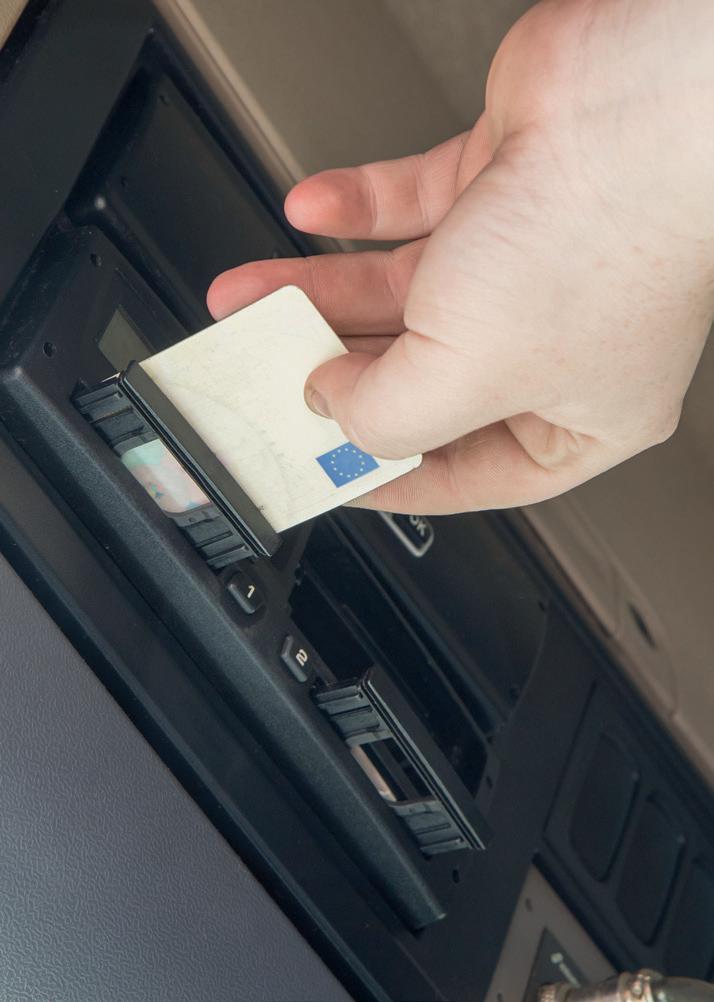
GEN 2 VERSION 2 STONERIDGE – ERROR MESSAGES
If you have new Gen 2 Version 2 Stoneridge tachographs in your fleet, be aware that the DVSA have recently issued a bulletin alerting operators to an incorrectly displayed error message that can appear on some units.
In some cases, the notification “hardware sabotage” will appear on the tachograph screen and will be recorded within the tachograph’s events/ faults log.
Stoneridge have given assurances that the tachograph will still operate normally but have yet to give an indication of when the problem might be rectified.
The advice is that, should a driver encounter this message, they should report it as a defect and make the relevant records on the back of a printout for roadside enforcement purposes.
WHAT DOES ‘VISION TO 2030’ MEAN FOR ENFORCEMENT WORK IN THE FUTURE?
The DVSA has published its vision to 2030, which sets out how they will be keeping Britain moving safely and sustainably. In March, Caroline Hicks, DVSA Head Regulatory Services and Transformation, shared a blog to explain what this means for enforcement work in the future, through 3 key areas.

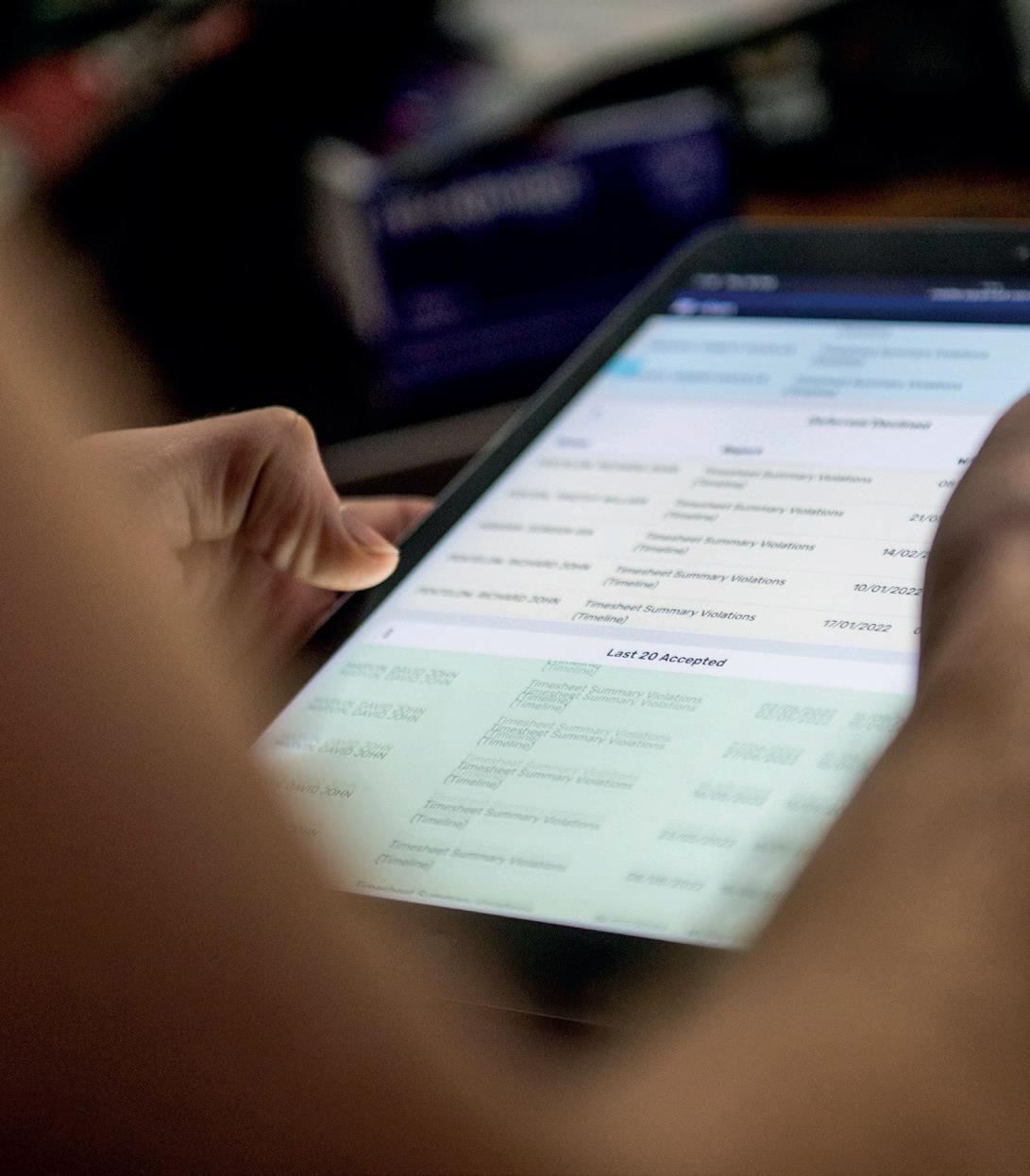
DEMANDS ON CALIBRATION STATIONS
With the mandatory retrofit of second-generation smart tachographs coming into force at the end of this year (31st December 2024) for HGVs* that undertake cross-border travel, several advisors and news outlets are reporting that calibration stations might not be able to meet demand if you leave the retrofit to the last minute.
With this in mind, it would make sense to book the retrofit in as early as possible so you don’t get caught up in this expected rush and risk missing the deadline. Schedule it in when the trucks are next due in the workshop for example – this way normal operations will not be disrupted by an additional trip to the workshop (use Asset Maintenance to help you). Plus, by doing it ahead of time you can benefit from the new and enhanced functions of the new tachograph early.
*vehicles that were equipped with tachographs before June 2019, i.e. analogue and digital (not smart).
PAGE 19
Have you got what it takes to gain Earned Recognition status?
If you are an exemplary compliant operation, test out your status using our Earned Recognition approved IT systems for Tachograph Analysis and Asset Maintenance.


PAGE 20
Clockwatcher Elite Asset Maintenance
for
free trial.
Contact the team
a

By www.aquariusit.com


















































